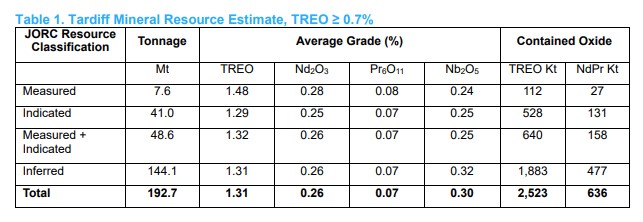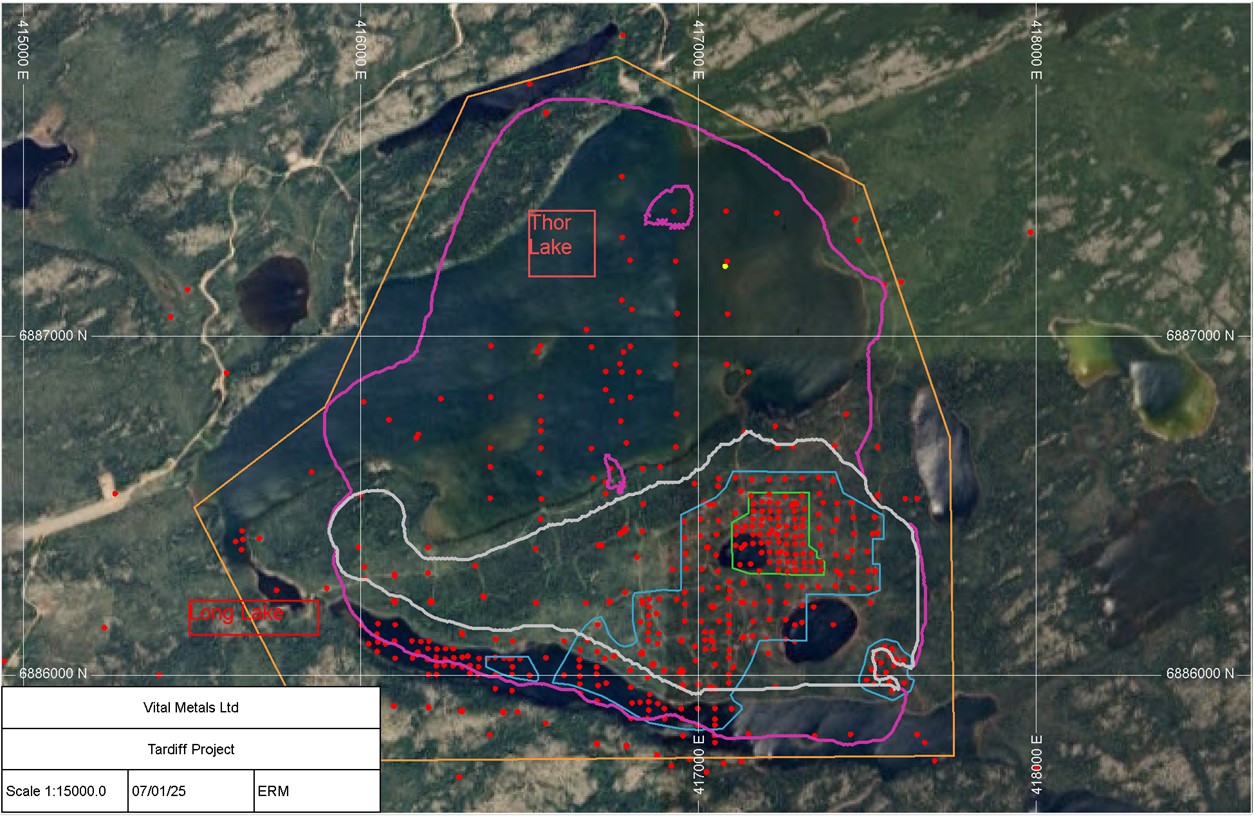In January 2025, Vital announced an updated Mineral Resource Estimate for the Tardiff Upper Zone Deposit at Nechalacho Rare Earths Project, ~100km southeast of Yellowknife, Northwest Territories, Canada. Tardiff is estimated to contain:
- 2.5 million tonnes of TREO within a total mineral resource of 1.92Mt at 1.3% TREO, a 70% increase in reported tonnes in the Indicated Resource compared to the previous MRE (April 2024).
- 636,000 tonnes of neodymium and praseodymium (NdPr).
- Niobium (Nb2O5), hosted within the same geological formations hosting the rare earth mineralisation, was reported for the first time.
 Notes:
Notes:
1. Due to effects of rounding, the total may not represent the sum of all components.
2. TREO (ppm) includes: Light Rare Earth Oxides (LREO): La2O3, CeO2, Pr6O11, Nd2O3, Sm2O3; and Heavy Rare Earth Oxides (HREO): Tb4O7, Dy2O3, Ho2O3, Er2O3, Tm2O3, Yb2O3, Lu2O3, Eu2O3, Gd2O3; + Y2O3
3. Mineral Resource is reported from blocks at or above the 150 m RL and within unconstrained optimised open pit shell “Optimized_Pits_2_Pit_85_100tr/pt”
4. Revenue in cutoff grade calculation is attributable to Nd2O3 and Pr6O11
5. NdPr = Nd2O3 + Pr6O11
6. Mineral Resources that are not Mineral Reserves do not have demonstrated economic viability.
7. The Mineral Resource effective date is 18th December 2024.
The MRE features a total resource tonnage (across all categories) of 192.7 Mt grading 1.3% TREO and 0.3% Nb2O5 containing 2,523 Kt TREO including 636 Kt of NdPr. The MRE is reported within an optimized open pit shell using Studio NPVS from the Datamine Suite. The optimized pit shell was generated using a 45 degree maximum final pit wall, and a 150 m RL lower pit limit. The optimized pit shell is presented in Figure 1 as the unconstrained pit.
Figure 
Figure 1: Drill hole collar plot – Tardiff drilling 2023

